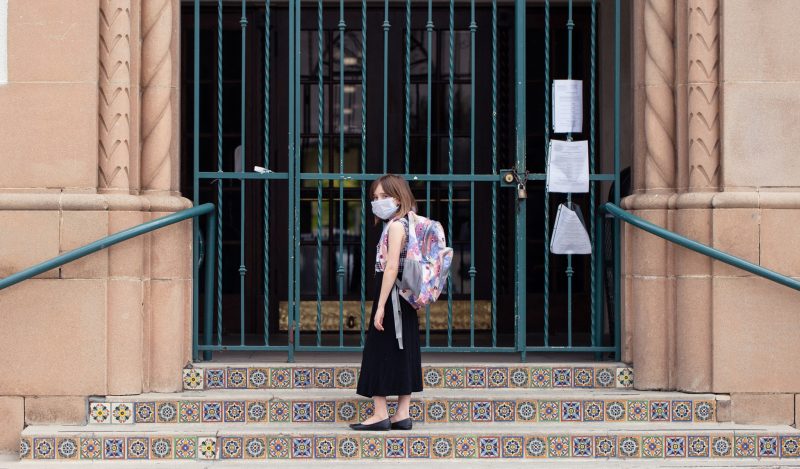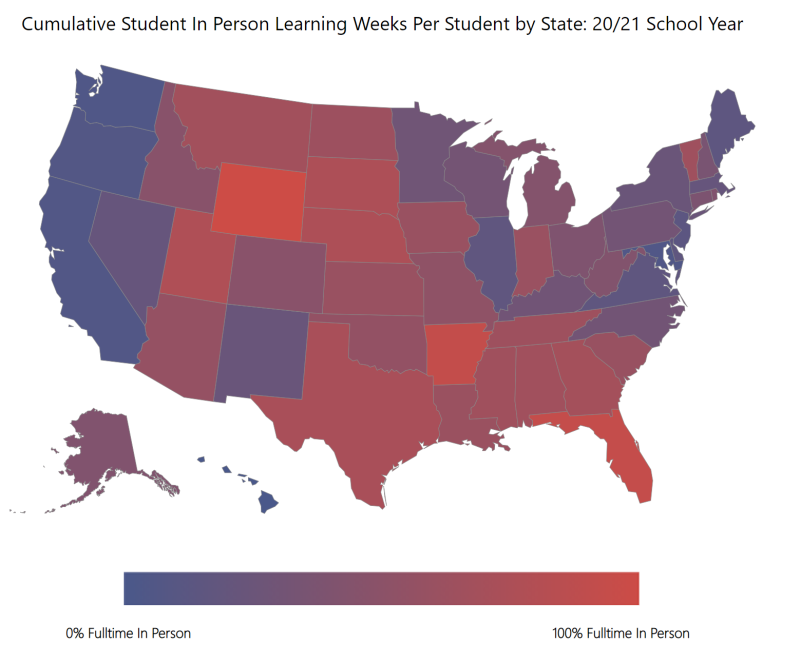
It’s no secret that political polarization within our country has affected policy response to the pandemic. The first year of the pandemic was smack in the middle of an election, where every single issue facing the nation was portrayed as a this vs. that, us vs. them, the left vs the right. Public health messaging was appropriated by politicians for the purpose of making political promises. Politicians on both sides made bold claims about their policies effects on the pandemic, and the bureaucracies within our Federal and State governments were often left to either pickup the pieces, or left carrying the flag of the “official messaging” of executive administrations by closely aligning their policies with political goals. The appropriate role of public health: a-political, advisory, driven by research and data, was almost completely dismantled. Who suffered the most from this petty political polarization? The children.
So here we are in 2023, and the prevailing public & expert opinion is that virtual school was a failed experiment, that open, in-person school is unequivocally the most effective mode of learning (shocker). Socioeconomically disadvantaged and minority children were affected disproportionately by virtual learning. The data are clear on that issue, despite the attempt at some to misrepresent the issue and inject dubious claims of nefarious racial motivations within the debate.

The most tragic part of school closures was that the science and research on the risks of open schools has corroborated on these few simple facts: that schools were not responsible for community spread, that schools could operate in-person safely even during periods of high community spread, and that burdensome mitigations actually had little to no significant effect upon transmission within schools.
Now that we have higher certainty about schools minimal effects on spread, the reality of the criticality of in-person learning to provide the best outcomes, and the disastrous consequences that closing them caused, we should be asking ourselves: why? While most of Europe kept their schools open (even during times of severe restrictions on adult social life), the US continued with school closures throughout about half the country.
Why did we allow schools to close? Answering this question is critical to preventing collateral damage to our children, and to learn how we balance competing harms when enacting policy. We must face the evidence, learn from our mistakes, and do better for our children’s sake.
If it wasn’t already abundantly clear that politics explains school closures more than any other factor, this paper from Brown University explores the evidence and sums up their research findings on the factors influencing school closures:
“Contrary to the conventional understanding of school districts as localized and non-partisan actors, we find evidence that politics, far more than science, shaped school district decision-making. Mass partisanship and teacher union strength best explain how school boards approached reopening”
Compare the chart on the left, which shows cumulative in-person learning by state (more red= more open schools, more blue = less open schools) with the election map on the right. The correlation is unmistakable.
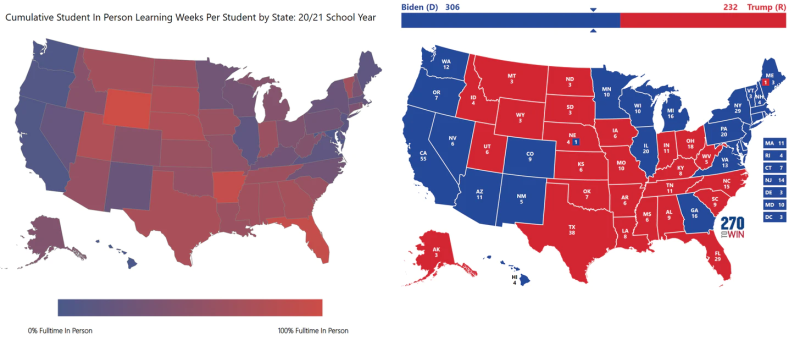
Another figure from the Brown Study makes the relationship even clearer.
“As Figure 1 shows, the decision to return students to in-person classes this fall was strongly correlated with the county-level share of the vote won by Donald Trump in 2016”
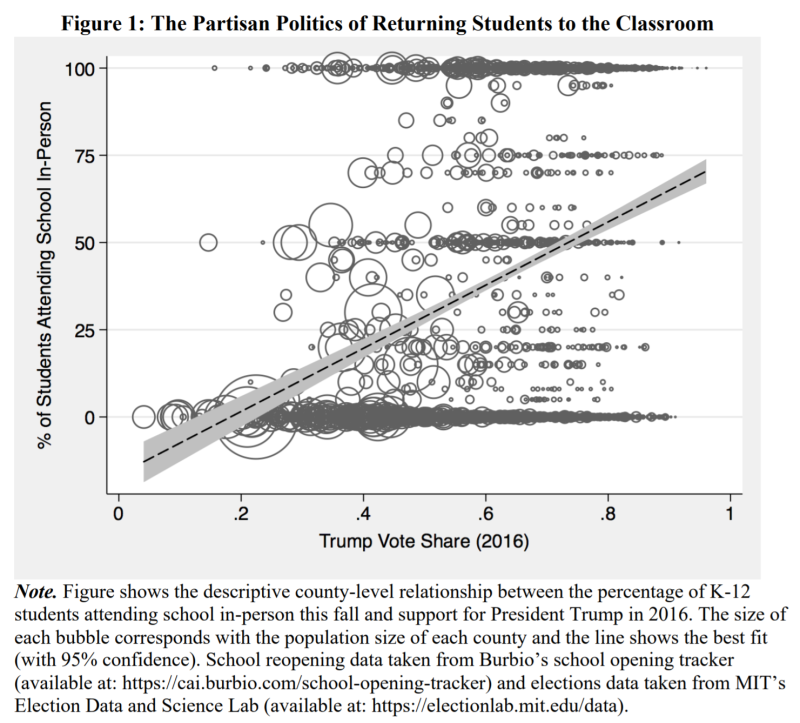
School Openings by State over Time
Let’s take a look at how the school closure/opening trended over time. Below is the a visual of the proportion of school districts by learning mode over time for states that voted for Joe Biden. You can see the distinct trend that occurred immediately after inauguration in January, with the school year ending at about 50% of students in those states in full time in person learning, with the remainder hybrid or fully remote.

Now let’s look at the States who voted for Trump in 2020. By mid-year over 50% of Students were back to full-time in person learning, and by the end of spring, over 90% were back to full time in-person learning.
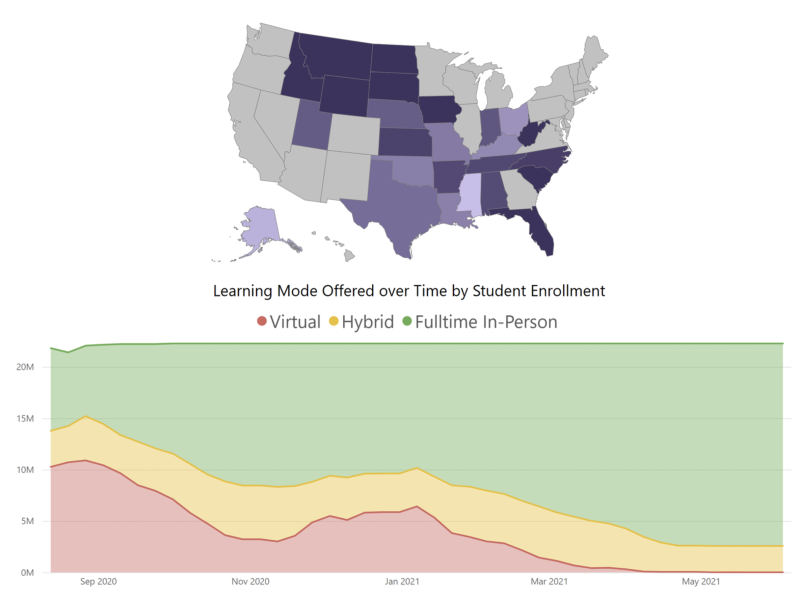
Below is what the picture looks like for all States combined. (Dark purple = more in-person school, light purple = the least in person school.)
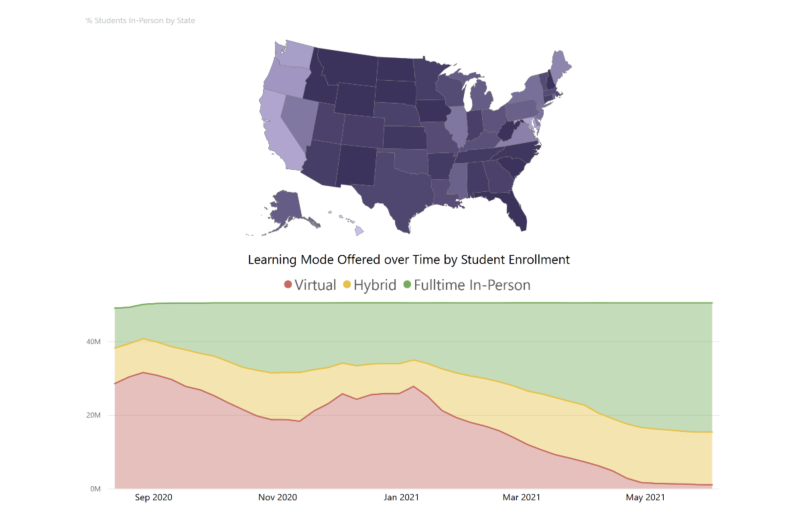
Thanks to Burbio’s data, we can also take a look at some of the state by state comparisons. Here’s California, Texas, Florida, and Illinois.

Virginia and New Jersey are two states have been in the National spotlight as school closure became an issue in their recent elections. In 2020/21, both were heavily affected by school closures. Here’s what they look like.
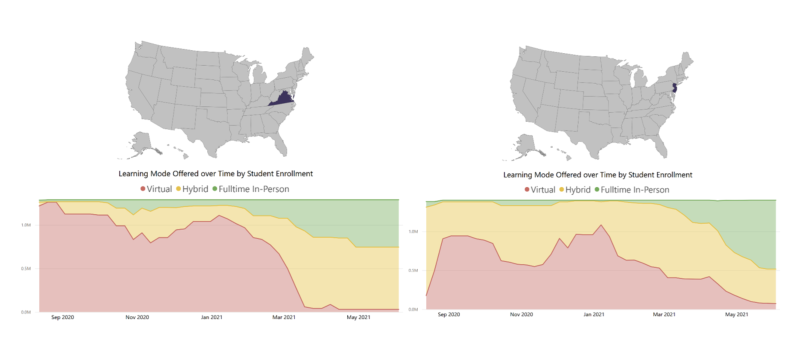
As these pictures make clear: children across our nation were living drastically different lives in 2020/21, depending upon where they lived.
When our local public school district decided to remain closed to in-person learning in Fall 2020, my wife and I were concerned about the effect that it would have on the most vulnerable in our community. We volunteered to chaperone/tutor at a local community center that was providing a drop-off service for “zoom school.” Aside from the irony of that scenario- (a building with people in it helping students learn that was setup because having a building with people in it to allow students to learn was somehow dangerous) the effects felt by families in disadvantaged communities were devastating. I spoke with many single moms, kids, teachers, and others who detailed the crushing effect this had on their lives. I got involved in any way I could to help other’s advocate for open schools. Looking back at that time, I am grateful we’ve come a long way, and it’s encouraging to see more admission that closing schools was a mistake. At the time of this writing, school closures are still occurring, albeit much rarer than last year. I truly hope we can one day put politics aside and do what’s right for our future and for our kids.
Republished from Substack.
Published under a Creative Commons Attribution 4.0 International License
For reprints, please set the canonical link back to the original Brownstone Institute Article and Author.
